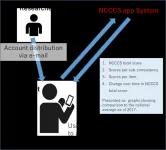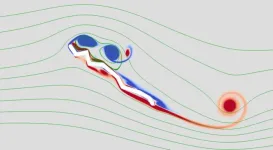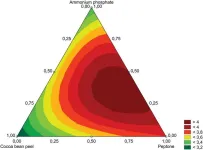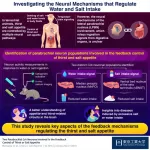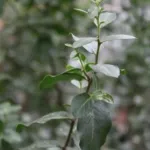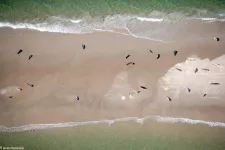(Press-News.org)
This study, led by Prof. Jiuhui Qu, Dr. Qinghua Ji, and Dr. Wei Zhang from Tsinghua University, focuses on addressing water scarcity by exploring atmospheric water harvesting. The water in the air originates from both natural and forced evaporation, with condensation being the final and crucial step in water harvesting. Condensation involves nucleation, growth, and shedding of water droplets, which are then collected. However, uncontrollable growth of condensed droplets leading to surface flooding is a pressing challenge due to insufficient driving forces, posing a threat to sustainable condensation.
To expedite this process and achieve orderly and rapid droplet shedding from the condensing surface, the team took inspiration from nature. They observed that the Australian thorny devil efficiently spread droplets, such as rains, dews, and pond water, from its scales to capillary channels between the scales, eventually connecting to its mouth. This natural mechanism made water easier to store and consume. Additionally, the team drew inspiration from fish, particularly catfish, which possess an epidermal mucus layer reducing swimming drag and enhancing adaptability to aqueous environments. These insights from nature address the challenges of orderly droplet navigation and low-drag droplet shedding, respectively.
The research team employed hydrogel fibers to create an engineered pattern on glass, incorporating the advantageous features of both lizards and catfish. The hydrogel fiber is an interpenetrated network of sodium alginate and polyvinyl alcohol with a partially polymerized surface and arch structure. The surface, adorned with branched –OH and –COOH chains, exhibits a strong affinity for water molecules. This affinity, coupled with the arch structure, provides sufficient driving force for droplets to move from the condensing substrate to the hydrogel fiber. Simultaneously, the branched –OH and –COOH chains can retain water molecules even after droplets leave the surface, aiding in the formation of a precursor water film that lubricates droplet sliding.
To observe droplet movement, fluorescent molecules were utilized as probes. The captured trajectories revealed an impressive migration rate, with droplets formed on the glass swiftly pumped to the hydrogel fiber, thereby regenerating the condensing sites. The success lies in the concurrent application of chemical wetting gradients and the Laplace pressure difference across the hydrogel fiber and the glass. The pumping effect resulted in a reduction of over 40% in the energy of the droplet-condensing surface system, acting as the driving force source. “This is similar to the directional water dispersion over the integuments of lizards” , Professor Qu notes.
The researchers also observed distinctions in the movement of water on the hydrogel fiber surface compared to that on glass. On the glass, droplets advanced as a cohesive unit with successive formation of new advancing angles, resulting in complete mixing of fluorescent probes within the droplet during advancement. In contrast, droplet sliding on the hydrogel fiber surface exhibited a layered behavior. The inner layer of water bonded to the hydrogel surface, while the outer layer slid without direct contact with the hydrogel surface. "The dangling chains over the hydrogel surface act like the mucus layer of the catfish, lubricating the friction between the droplets and the condensing surface," explains Dr. Ji.
This engineered hydrogel fiber pattern increased the condensation rate by 85.9% without requiring external energy input. Moreover, it was successfully applied to enhance the water collection rate of solar evaporative water purification by 109%. This study not only provided insights into natural phenomena but also marked a novel attempt to manipulate droplet movement for condensation. The findings lay the foundation for future endeavors in discovering phenomena and translating theories into practical applications.
###
See the article:
Pumping and sliding of droplets steered by a hydrogel pattern for atmospheric water harvesting
https://doi.org/10.1093/nsr/nwad334
END
To improve the care coordination competency of nurses involved in the management of critically ill patients on life support, an electronic app—NCCCS—was developed by Associate Professor Chie Takiguchi of Toho University and Professor Tomoko Inoue of International University of Health and Welfare.
The NCCCS app utilizes the scoring system referred to as the Nurses' Care Coordinate Competency Scale (NCCCS), developed by Dr. Takiguchi et al. in 2017, and it is currently being translated into Chinese, Italian, Polish, and Persian. This app offers immediate feedback to nurses caring for critically ill patients on life ...
Scientists from Hiroshima University undertook a study of dragonfly wings in order to better understand the relationship between a corrugated wing structure and vortex motions. They discovered that corrugated wings exhibit larger lift than flat wings.
Their work was published in the journal Physical Review Fluids on December 7, 2023.
The researchers set out to determine if the corrugation of a dragonfly's wing is a secret ingredient for boosting lift. While past research has largely zoomed in ...
Amylases are among the most important biotechnological and industrial enzymes that can be applied in various sectors, such as food, pharmaceuticals, textiles, chemicals, paper, and detergents.
The enzymes’ costs come from a range of factors including the quantity produced, the production process, the expense of its recovery, and the degree of purity at which it will be marketed, etc. The use of agro-industrial substrates and microorganisms brings the potential to low-cost enzyme production. Meanwhile, due to the ability to improve physical and chemical resistance to industrial environmental extremes, such as high temperature and pH, as well ...
Staying hydrated and consuming appropriate amounts of salt is essential for the survival of terrestrial animals, including humans. The human brain has several regions constituting neural circuits that regulate thirst and salt appetite, in intriguing ways.
Previous studies suggested that water or salt ingestion quickly suppresses thirst and salt appetite before the digestive system absorbs the ingested substances, indicating the presence of sensing and feedback mechanisms in digestive organs that help real-time thirst and salt appetite modulation in response to drinking ...
Early in the pandemic, clinicians noticed that certain immunocompromised patients were experiencing persistent SARS-CoV-2 infections, some lasting weeks to months at a time.
This raised concerns that one of these cases could be the source of an emerging viral variant that has benefited from an extended battle with the immune system.
A prospective study published in the journal Lancet Microbe provides more clarity on which patient populations are at higher risk for prolonged infections —and hints that this fear is likely unwarranted.
The ...
A new statistical tool developed by researchers at the University of Chicago improves the ability to find genetic variants that cause disease. The tool, described in a new paper published January 26, 2024, in Nature Genetics, combines data from genome wide association studies (GWAS) and predictions of genetic expression to limit the number of false positives and more accurately identify causal genes and variants for a disease.
GWAS is a commonly used approach to try to identify genes associated with a range of human traits, including most common diseases. Researchers compare genome sequences ...
As part of the Ice Memory initiative, PSI researchers, with colleagues from the University of Fribourg and Ca’ Foscari University of Venice as well as the Institute of Polar Sciences of the Italian National Research Council (CNR), analysed ice cores drilled in 2018 and 2020 from the Corbassière glacier at Grand Combin in the canton of Valais. A comparison of the two sets of ice cores published in Nature Geoscience shows: Global warming has made at least this glacier unusable as a climate archive.
Reliable information about the past climate and air pollution can no longer be obtained from ...
A valuable molecule sourced from the soapbark tree and used as a key ingredient in vaccines, has been replicated in an alternative plant host for the first time, opening unprecedented opportunities for the vaccine industry.
A research collaboration led by the John Innes Centre used the recently published genome sequence of the Chilean soapbark tree (Quillaja saponaria) to track down and map the elusive genes and enzymes in the complicated sequence of steps needed to produce the molecule QS-21.
Using transient expression techniques developed at the John Innes Centre, the team reconstituted the ...
As digital devices progressively replace pen and paper, taking notes by hand is becoming increasingly uncommon in schools and universities. Using a keyboard is recommended because it’s often faster than writing by hand. However, the latter has been found to improve spelling accuracy and memory recall.
To find out if the process of forming letters by hand resulted in greater brain connectivity, researchers in Norway now investigated the underlying neural networks involved in both modes of writing.
“We ...
Computers can count seals from aerial photographs with lightning speed and reliability. Based on their spatial patterns, the tiny dots on the aerial images can even be assigned to one of the two major species of seals in the Wadden Sea. That is shown in the thesis that marine biologist Jeroen Hoekendijk will defend on January 26 in Wageningen. "To better understand if and how marine mammals like seals are affected by climate change and the disappearance of sea ice, this help from artificial intelligence (AI) in observations is crucial," Hoekendijk said. Hoekendijk carried out his research at the Royal Netherlands Institute ...


